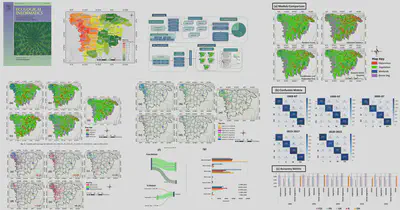Machine learning-based spatial-temporal assessment and change transition analysis of wetlands: An application of Google Earth Engine in Sylhet, Bangladesh (1985–2022)
Abstract
Wetlands are crucial ecosystems as they enhance the quality of groundwater, protect from natural hazards, control erosion, and provide habitat to rare species of flora and fauna. Despite being valuable ecosystems, wetlands worldwide are decreasing in many regions, making mapping and monitoring of wetlands crucial. Large-scale wetlands mapping is challenging but recent advancements in machine learning, time series earth observation data, and cloud computing have opened doors to new techniques to overcome such limitations. Through evaluating the effectiveness of different classification methods, this study provides a brief analysis of wetlands dynamics in Sylhet, Bangladesh. The analysis is carried out between 1985 and 2022 using Google Earth Engine, Landsat imagery, and several spectral indices. To obtain reliable results, four classification algorithms (Random Forest, Minimum Distance, Classification and Regression Trees, and Support Vector Machine) are evaluated. As a result, Random Forest proved to be the most efficient and accurate for wetlands mapping by producing 99% accuracy across all periods. Change detection shows a rapid decrease in the wetlands in Sylhet, which could have serious consequences to the aquatic and terrestrial species, water and soil quality, and wildlife population, if not addressed. Between 1985 and 2022, nearly 45% of the wetlands have been lost in the region due to shifting land-use patterns, especially the conversion of wetlands into vegetative land (∼82,000 km2) as a result of increased agricultural practices in the region. Four critical regions (i.e., Derai, Sulla, Jamalganj, and Ajmiriganj) have undergone ∼80% reduction in wetlands, requiring prompt interventions for conservation and restoration of wetlands given their diverse services.
